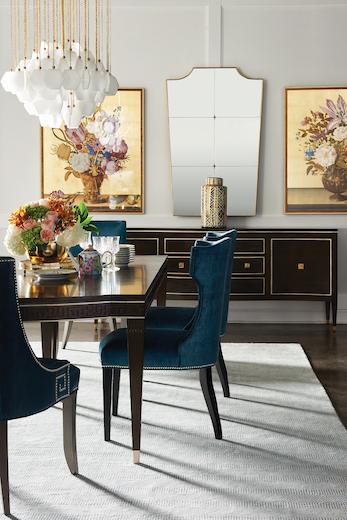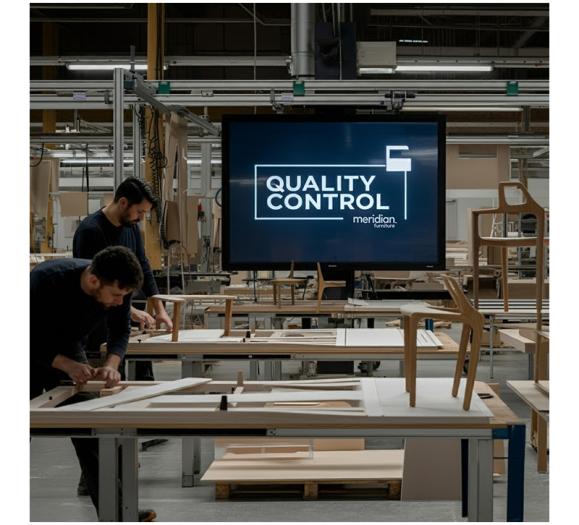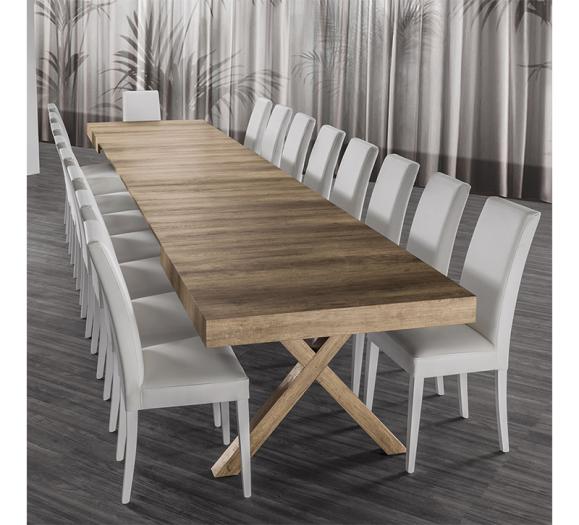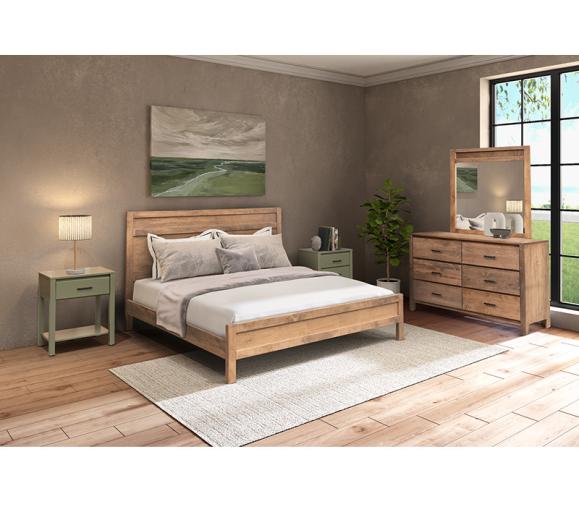In the casegoods category, “luxury now is more livable and relaxed, with a little less formality, like taking your tie off when wearing a suit,” says Eric Graham, President of Jonathan Charles, a company — long known for exquisite occasional and accent furniture — shifting this market to a lifestyle approach and a new identity as a full-on casegoods resource.
“We’re changing our game, our position, to become a lifestyle furniture brand, known for collections and not just the special jewelry items,” Graham says. “The overall story remains the same: It’s about quality craftsmanship and really well-made products that you put your hand on and think, ‘This feels like really fine detail.’”
“There’s nothing more luxurious than getting exactly what you want and not settling, something so special and unique that when you get the piece in your home, you know that there may never, ever be another piece exactly like it ever made,” says Laura Holland, Vice President of Marketing at Hickory Chair, a company, she says, that has “never made anything that anybody needed.”
For designer Elizabeth Gullett, Principal, Elizabeth Gullett Interior Design in Memphis, TN, true luxury is that something that “feels good and soothes your soul from the frantic pace that we’re all keeping.”
Luxury, says Graham, is about “the experience, the attributes and the ability to make furniture yours in some way, shape or form. It’s the customization, the special things that can be done to give a piece an identity that you can make your own.”
Though Jonathan Charles’ luxury goods are produced overseas, he notes that the company is still capable of producing one-of-a-kind pieces. “We’ve got a complete custom dining program where somebody can make choices literally inch by inch, picking veneers, sheen level, finish, inlays if they want inlays and change up the carvings too.”
What You Want, Baby I Got It
“Luxury may be different for each person, but customization is key,” says interior designer Sarah St. Amour, President of St. Amour Interior Design, which serves the Palm Beaches and the Treasure Coast. “As an interior designer, you want to be able to get the fabric you love, the nail heads you want, the piece made two inches bigger.”
The pool of go-to resources offering true customization capabilities in a timely manner to interior designers is decidedly smaller these days. St. Amour often turns to Abner Henry Fine Furniture, an Amish maker based in Mt. Hope, OH, which shares space with high-end upholstery company Stanford Furniture during market, and Tritter Feefer, a family-owned and -operated concern creating luxe, customizable, bench-built bedroom, dining and occasional furniture in LaGrange, GA. The company caters to the design trade and is known for its fashion sense and fresh designs. “You can get [Tritter Feefer] to make pretty much anything, in any size and in any finish,” St. Amour says, “and that’s what my clientele demands.”
“No matter how affluent the client, there’s still a budget,” Gullett notes. “I’m about to order a dining table and I love Tritter Feefer’s style, but I need it bigger. They are essentially having to re-design the table to make it larger, but they will do it and it’s not a crazy upcharge. Tritter offers a very classic mix. There’s enough traditional, but it’s a got a little bit of an edge, and they also have pieces with a more modern look. It feels very fresh.”
This High Point Market, the company is introducing Tritter Feefer ID (the ID stands for interior design, immediate delivery and import division). “While we’re known for our customization, and we will continue to make furniture in Georgia, younger shoppers want it now,” says ML Littlefield, Owner, adding that designers also often need something fast to complete a project. “This new division complements our custom line, while enabling us to have furniture in stock for those who want, or need it, quickly.”
Borkholder Furniture, an Amish concern known for heirloom-quality, bench-built wood furniture is also unveiling a new division. Borkholder Select offers “select” dining tables and chairs in-stock for immediate delivery. “We recognize that there is a need for quality dining furniture sized for homes where space is an issue and that is a niche we intend to fill,” says Bill Cubberley, Director of Business Development.
The Young and the Beautiful
“There are a good percentage of Millennials who have established success in their careers. They’re increasing their wealth and they’re willing to step up in quality,” reports John Jokinen, President and CEO of high-end furniture maker EJ Victor. “It’s a whole new generation of customers that we have to learn about, and from.”
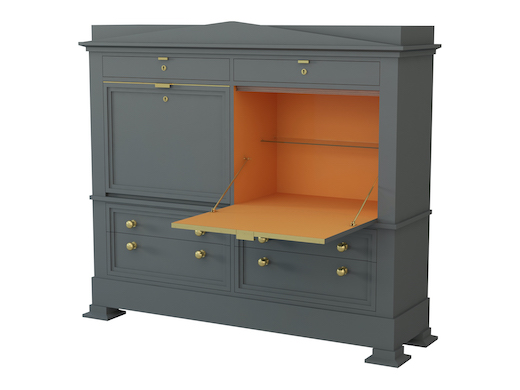
Jokinen says a focus on product that appeals to these customers is changing EJ Victor’s business. “Even though they might appreciate old-world collections of art and accessories, they don’t want a formal assortment,” he says. “It needs to be casual and it needs to be refined, and as designer Ryan Korban says, it needs to be urban cool.”
EJ Victor teamed up with Korban, a renowned New York-based interior designer and Millennial who has worked with celebrated fashion houses — Alexander Wang, Joseph Altuzarra and Balenciaga — last High Point Market, along with Antonia, an interior architect from Bogota and trained in Milan, who Jokinen says is “among the leading breed of new talent in tune with her generation. She brings a real sense of European fashion.
“Ryan believes that his customers know fashion brands and they have a vision of what their design needs to be for their home,” the executive relates. “We’ve had to adjust some of our designs to approximate what their needs and wants are. It’s a cleaner look, even in the traditional sense.”
Along these lines, this market, watch for the next round of introductions by both young designers, which Jokinen says he expects “to generate a lot of interest. I think our challenge as an industry is to understand this next generation coming up and how to address their needs. And it’s got to be different than what we’re doing now.” Keep an eye out here as well for the launch of designs by Philadelphia design firm Browne & Moore, which he describes as “a more clean and modern way to approach traditional.”
Additionally, Jokinen notes, “We have invested a lot of space in new equipment, and our strategy is to bring back manufacturing to the U.S., to offer customization for 90 percent of our line, including casegoods. We’ve been able to attract craftspeople in our area back because there are fewer manufacturing facilities now. This is not only about quality, it’s about preserving jobs in America, and that’s a big deal.” The ability to buy American-made products can be considered a luxury today, he says. “There’s a sense of pride in that. People all over the world like Made in America, and that’s going to be a good thing for us.”



